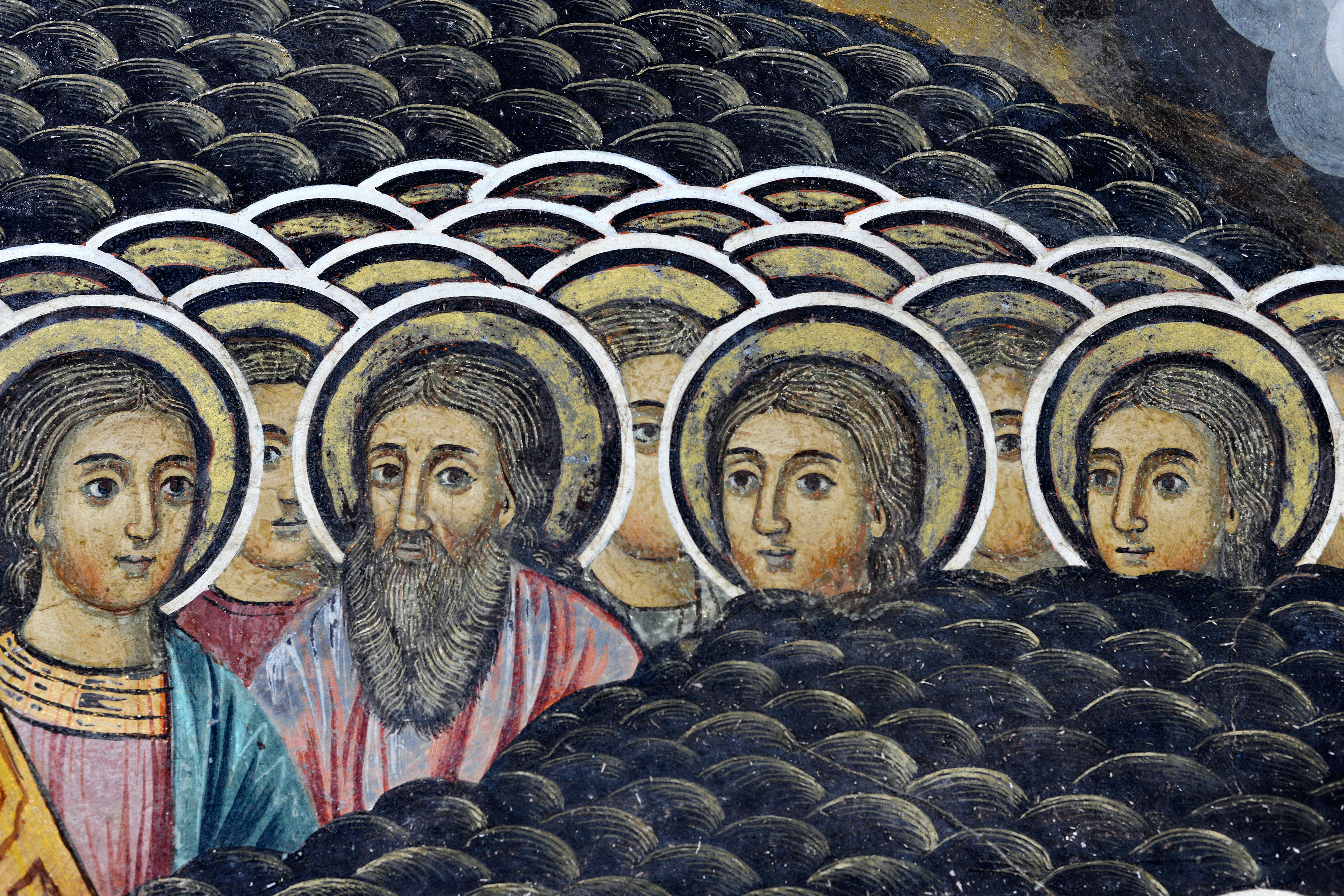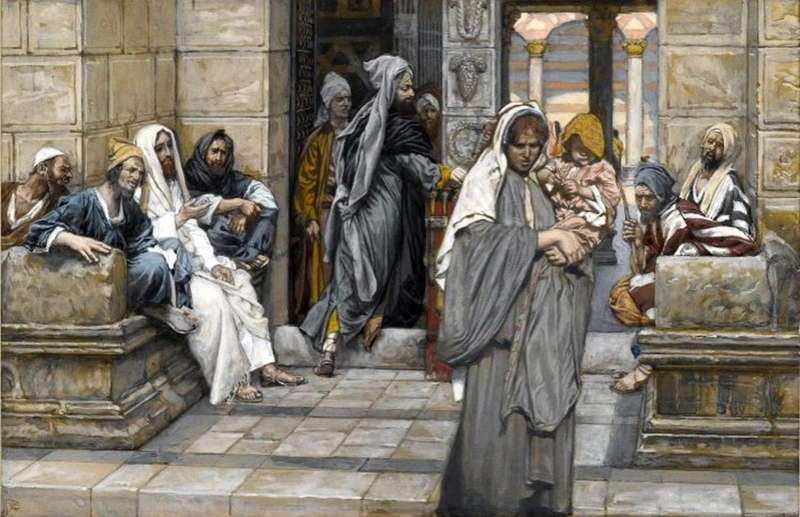We’re told that the widow in this gospel gave “everything she had to live on” to the Temple treasury. Everything she had to live on didn’t, however, amount to very much: the amount referred to in the text was equivalent to a day’s wage for a poorly paid labourer. Nevertheless, precisely because it was everything she had, it was an infinitely more generous offering than even the largest donation given by the richest person from what they didn’t need. And so it is that this episode has been read as a parable of total generosity, foreshadowing Jesus’ own total generosity on the Cross.
But the immediate context suggests another dimension to this familiar story. Jesus certainly praises the impoverished widow for her generosity, but the story is recounted as part of a searing attack, not on the Temple as such, but on the tribute system that maintained it and particularly on the those who benefitted from it, in this instance, the Scribes, specifically for their corrupt and callous greed in taking the money of one who could so ill-afford it.
At the beginning of this gospel passage, Jesus excoriates the Scribes for their hypocrisy in parading their devotion in public, while surreptitiously swallowing up the property of poor widows in private. The Temple was indeed the sanctuary of God’s presence: but the system surrounding it had been turned into a highly lucrative financial enterprise. This story is also told, then, as an illustration of the system’s corruption. The Scribes, of course, are usually yoked in the gospels with the Pharisees. From the point of view of both, Jesus was a threat not 2 just to their authority and standing, but also to their financial interests.
Just as the Chief Priests had done before them, they’d worked out that if he wasn’t dealt with, and soon, not only would he expose their exploitation before the people, but he’d also stir up trouble for them with the Roman authorities. And they were right to be nervous: Jesus was most certainly exposing the scandal of their shameless self-promotion, thinly veiled by their sickening ostentation. Widows, remember, were among the most vulnerable people in society, having no legal rights whatever and being completely dependent on charity. That’s why the Jewish Law singled them out for special care and sympathy, along with the orphan and the stranger.
Little wonder, then, that this is one of the few instances in the gospel when Jesus is shown to be furious. And how could he not be? Aquinas says that it’s the mark of a virtuous person that injustice angers them. The story of the widow’s mite, then, turns out to be yet another warning about the perils and pitfalls of institutional religion, prone always to become focussed on externals only, demoting the love of God and neighbour, the essence of the Law, from first place in the order of priority. The widow is praised for her generosity: but she’s also pitied as a victim, the victim of an institution originally intended to liberate and enhance life, but which had become an oppressive and overbearing burden to the vulnerable and a gravy train for the already wealthy.
No surprise, then, that within days of this episode, this same corrupt institution would collude with the military might of Rome, through the agency of its venal provincial governor, Pontius Pilate, to rid itself of the trouble-maker from Galilee, Jesus, the disturber of Israel’s peace and Rome’s violently imposed pax.
Of course, the corrupt institution that killed Jesus wasn’t uniquely corrupt; all human institutions are prone to corruption, precisely because they’re human. We all share a fallen nature, a nature that is flawed, skewed and off-balance. Not, to be sure, totally corrupt, as classical Protestantism holds, but certainly damaged and, as a result, sometimes damaging.
And the effects of Original Sin are seen and experienced not just in our private lives, but in our public, social lives, too . The Church, even though a divine institution in its essence, which is Christ Himself, is prone in its human elements, in us, that is, to corruption, too. (Anyone who denies that hasn’t been paying attention). The holiness of the Church carries no fail-safe guarantee against failure or weakness in its human members: it never was in the past and it won’t ever be in the future. The apostles themselves, and none more than Peter himself, were fallible and fear-filled human beings, none of whom would have made it through even the most indulgent seminary selection board these days.
Affirming the holiness of the Church in the face of so much that seems so patently unholy is, and always will be, an act of faith, based on our Catholic conviction that the Church is Christ’s Body: we, its members, don’t constitute it but are incorporated into it or, more accurately, into Him.
There is, however, one point at which the holiness of the Church, the holiness of Christ, is manifest and unambiguously present, unhindered by human weakness and frailty: that is in the sacraments, and nowhere more explicitly than in the Mass. The reality of Christ’s presence and the fruitfulness of the sacraments is guaranteed and unaffected by the unworthiness of any of its participants, including the ordained participants.
The effect of the sacraments is said to be ex opere operato, that is, “on the basis of the act itself”. There are many official descriptions or “models” of the Church: the Pilgrim People of God, the Universal Sacrament of salvation, the Mystical Body of Christ. But one Latin American theologian, the late Jesuit, Juan Luis Segundo, defined the Church as, first and foremost, “an undreamed-of possibility of love”. That description has the great advantage of challenging each of us with the responsibility to realise in our own lives, at home, in the workplace, in the nation, in the world, this “undreamed-of possibility of love”: Christ’s love, that is, made real through us.



 Loading ...
Loading ...
What do you think?
You can post as a subscriber user ...
User comments (0)